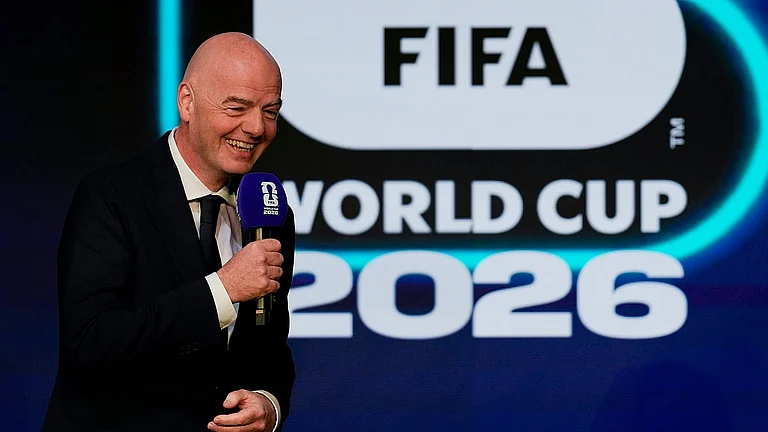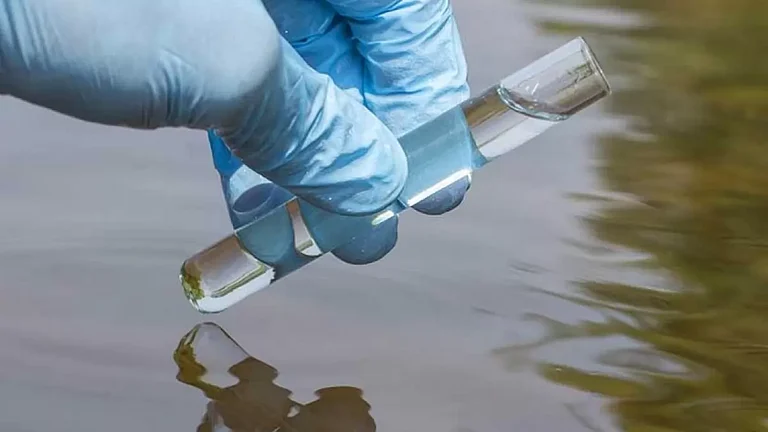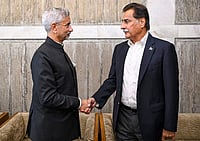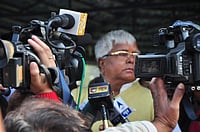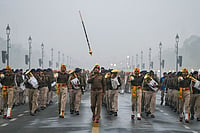It's become an agreed area of silence that Kohinoor and company are in Britain to stay. Also that the British brought home what treasures they found and that these are sitting pretty in British museums, thank you. It's taken the Greeks to show that it doesn't have to be so.
Following up their lead, an Indian initiative has been launched in London to win back at least some of its treasures. It follows the setting up of a British parliamentary committee to consider the return of the Elgin marbles to Greece after extensive negotiations. That the Labour regime is considering the return of the Elgin marbles, a star possession of the British Museum, brings a glimmer of seriousness to the move under way for the return of Indian treasures.
The move has been launched by the Committee for the Restoration of the Cultural Heritage of India (crch) headed by Bhaskar Ghorpade, a barrister who successfully fought the case for the return to India of a famous 12th century Pathur Nataraja statue.
'It's the right time to move,' says Ghorpade. 'The House of Commons select committee can probe the possession of all major works of art either stolen or dubiously acquired by Britain's museums and art galleries.' The Elgin case, he says, can show the way. The case for the return of the marbles, which date back to 5th century BC, was opened in Britain for the first time in about 200 years that these have been here.
'It's a myth that the British museums preserve these treasures carefully,' charges Ghorpade. A standing commission on museums and galleries had reported that the Indian collections were 'scandalously neglected'.
'We don't know what has happened to countless Indian antiques salted away in museums across Britain,' says Ghorpade. 'So, the Indian government must move quickly.' His initial focus could be on the return of the Amravati marbles, taken from a temple in Andhra Pradesh and preserved in the British Museum. The marbles date back to 1st or 2nd century AD. His panel will also start talks on the Indian collections of the Victoria & Albert Museum.
The last Indian leader to have made noises about it was Indira Gandhi. Controversies over Indian treasures in Britain surfaced during the Festival of India in London in '82 when Indian antiques appeared publicly for the first time and were offered for sale. Indira Gandhi spoke strongly against the looting of Indian treasures by 'adventurers'. But the government made no serious moves. Sheila Kaul, the then minister for culture, said in '83 that India was ready to make a serious effort to retrieve its looted heritage. That too was just another speech. India has never piled pressure on Britain comparable to the efforts launched by Greece.
Greek minister for culture Elisavet Papazoi was in Britain last week campaigning for return of the Elgin marbles to Greece. Her campaign has won the support of Prince Charles. 'We are prevailing in British public opinion,' Papazoi said in London. In contrast, India is keeping a 'deafening silence,' says Ghorpade. 'The government of Maharashtra was once keen to have Shivaji's sword returned. Then, objects belonging to Guru Gobind Singh should be returned to Punjab. But nobody is saying a word about this,' laments the barrister.
He suggests the Indian government first send a team 'to check the whereabouts of Indian treasures in Britain and see that these have been maintained properly'. And adds: 'When an official British report says these treasures have been scandalously neglected, what does it mean? We must find out. But nobody in India seems to care.'
One major collection of Indian objects sits with the Royal Asiatic Society. But 'the collection of prints of drawings and paintings by both British and Indian artists has been largely neglected,' a critic wrote. A part of this collection was destroyed in a fire at an exhibition in London's Crystal Palace in 1866 and again in another fire in 1885 in South Kensington's Indian Museum.
'Preservation of our past has never been our concern,' rues Ghorpade. 'With the select committee now set up, the time has come for a determined effort to fight for our pride.' The barrister claims that 'British museums are so laden with Indian treasures that often they don't have room to even store them'. The Indian section in Victoria & Albert Museum displays just 1 or 2 per cent of the collection from India.
Laser technology enables British museums to continue to display perfect reproductions while returning the treasures to India, says Ghorpade. 'There can be a replicated sequence of all articles. Also, there's a new fashion even in political circles now to return these objects to the country of origin,' he says.
The Kohinoor, Guru Gobind Singh's kalgi and sword, Shivaji's sword, the Amravati marbles...they are just the tip of the iceberg. 'Even the smallest museum with non-European objects has something Indian in it,' says Deborah Swallow of Victoria & Albert Museum.
Besides the prominent museums, there's the royal collection. It's never been made public. Then come the lesser-known museums. The Robert Clive collection at Powis Castle in Wales is one such treasure house. And Indian objects have begun to surface even in Ireland. One such is a family collection in Newbridge, known earlier as the 'cabinet of curiosities'. Much of it was built up by Thomas Cobbe, from the family that owned the house. Cobbe married an Indian, Naees Begum, and they built up the collection during his posting in Murshidabad. It includes a peacock-shaped boat model and brocade slippers with beetle wings. Some of these were auctioned at Christie's in 1837.
Indian treasures are retained by families of British officers who served in India. 'Almost every governor-general brought something back,' says Swallow. The most famous is Curzon's collection. Many antiques remain in his family museum in Kedleston Hall in Derbyshire. Dalhousie too collected valuable objects at his family home in Scotland. The Indian government has not even tried to find out what such collections contain.
Many of these objects have been auctioned through Christie's or Sotheby's. But Swallow says that relative to what there is, only a small amount is auctioned each year. The first organised collections were made by the East India Company in 1798. Charles Wilkins was the first librarian of the then 'Oriental Repository' in 1801. That is when the 'official' loot began.
In 1808, Wilkins recorded the entry of its most famous possession Tipu's musical tiger depicting a tiger devouring a European soldier. The exhibit is at the Victoria & Albert Museum. The Amravati marbles were soon added to it. An excited Illustrated London News wrote in 1861: 'A more interesting collection of sculpture does not exist.'
By 1879, the Indian Museum listed 19,066 objects. A museum official, Purdon Clarke, was sent to India to fill in gaps in the collection. He sent 3,400 objects in 1881-82. Most of it was later divided between British Museum and Victoria & Albert Museum.
The National Portrait Gallery has a large collection of Indian portraits. The Cheltenham Art Gallery & Museums has many objects as many civil servants who returned from India settled around Cheltenham. Then there are libraries and museums in the university towns of Oxford and Cambridge.
The Commonwealth and unesco have proposed steps to prevent transfer of national treasures out of a country. But these laws will not operate retrospectively. The British do not seem keen to implement such laws. Oddly, nor does India.







